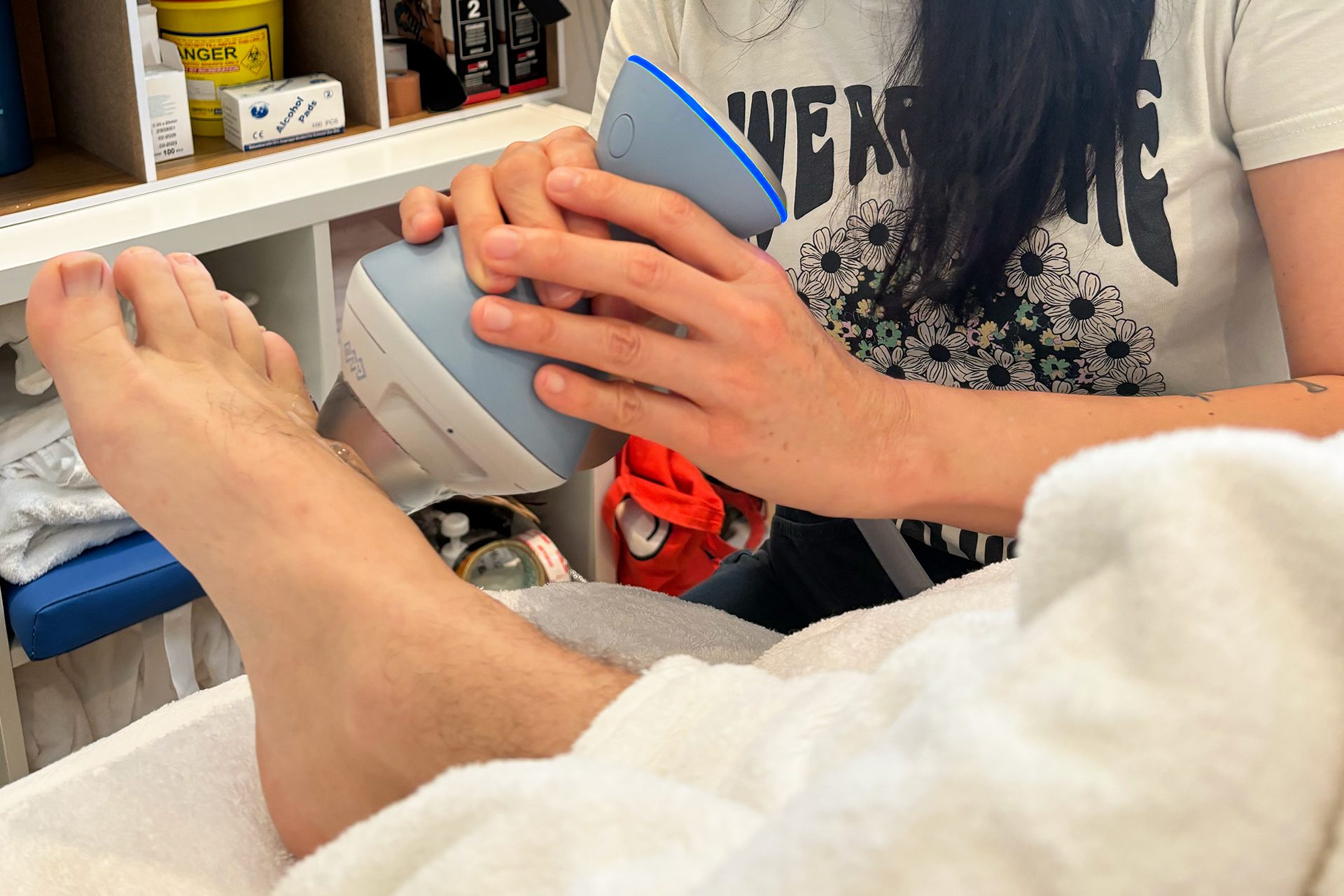Treatment for Foot Fractures
Conservative foot fracture treatment is important for rehabilitation, focusing on immobilization to protect bone healing and reduce pain during the initial stages of recovery.
At HelloPhysio, we adopt a comprehensive and patient-centered approach to managing foot fractures. Our skilled multidisciplinary team conducts a thorough assessment that considers various factors influencing your recovery. The assessment is designed collaboratively with you to restore mobility and strengthen the muscles supporting healing bones. This comprehensive approach not only promotes healing but also helps prevent future injuries.
Healing often starts with addressing the fracture. The initial step often involves immobilizing the fracture site. This immobilization maintains proper bone alignment and stability, which is crucial for optimal healing and minimizing disruptions during this critical process.
As recovery progresses, INDIBA® Activ can be introduced to improve local blood flow around the fracture site. This increased blood flow delivers essential nutrients and oxygen, aiding bone healing and reducing inflammation. Once the bone is ready for gentle weight-bearing, Shockwave Therapy may enhance bone density and address soft tissue scarring from prolonged immobilization.
Manual therapy and targeted exercises for foot fractures strengthen the muscles surrounding the foot and ankle. This improves mobility, alleviates pain, and helps ease the strain on surrounding muscles and connective tissues. By strengthening these muscles, we can enhance overall limb function and minimize the risk of secondary issues arising from altered walking patterns.
Book an Appointment
Exploring the Mechanism of a Foot Fracture
A foot fracture occurs when one or more bones in the foot break or crack. This can happen from a direct impact, overuse, or force exceeding the bone’s strength. The resulting physiological effects significantly impact movement patterns, making specialized physiotherapy interventions crucial to address and minimize these issues.
Foot fractures can significantly impact our movement due to the body’s natural response to injury. The immediate pain response triggers protective mechanisms, leading individuals to subconsciously alter their gait or walking pattern to avoid putting weight on the injured foot. While these compensatory strategies can provide short-term relief, they can lead to imbalances and place undue stress on other body parts.
Furthermore, swelling and inflammation, common features of foot fractures, contribute to stiffness and reduced range of motion in the affected area. This limitation in movement can further alter how a person walks, stands, or performs daily activities, ultimately impacting their overall mobility and functionality.
Prolonged immobilization, often necessary for healing foot fractures, can cause muscle weakness and atrophy due to disuse in the injured foot and the surrounding areas. This loss of muscle strength and mass complicates rehabilitation, requiring targeted interventions to rebuild strength and restore normal movement patterns.
The foot plays a crucial role in proprioception – the body’s ability to sense its position and movement in space. A fracture can disrupt this sense of position, impairing balance and coordination. The loss of this information makes navigating uneven surfaces or performing complex movements challenging, increasing the risk of falls or further injury.
A foot fracture involves a break in any of the bones within the foot, often resulting from direct impact, awkward falls, or excessive twisting. The physiological effects of such injuries drastically alter an individual’s movement patterns, necessitating a targeted physiotherapy approach to address these changes and promote optimal rehabilitation.
Connect with Physiotherapists for Foot Fracture Rehabilitation
At HelloPhysio, our experienced clinical health professionals are dedicated to guiding you through the rehabilitation of your foot fracture. Led by our senior physiotherapists, our expert rehab team specializes in managing musculoskeletal dysfunctions, orthopedic disorders, acute injuries and sports-related conditions.
To learn more about our thorough approach to foot fracture treatment, reach out to one of our physiotherapy clinics in Singapore. Contact us to discuss your needs or arrange a consultation with our team.

